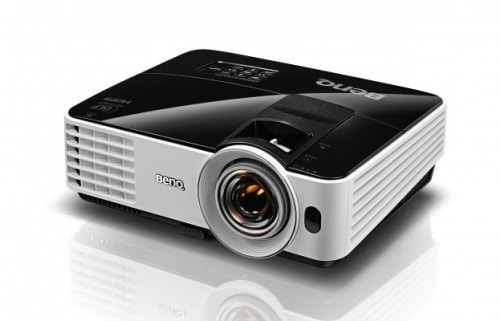Short Throw Vs Long Throw Projectors

When looking for your ideal projector in the market, there are specific questions you need to address. However, one of the most confusing questions you will encounter is: should you get a short-throw or a long-throw projector?
As with any projector, choosing between a short- or long-throw projector depends on several variables. These include space, screen size, cost, portability, and, most importantly, your needs.
Our guide below dives deep into comparing a short- and long-throw projector. First, let’s familiarise you with the basic definition of throw.
What does throw mean?
A projector’s throw refers to the distance the device requires to project an image on a projection screen or wall. It is determined by the types of lenses that the projector has – whether those lenses are based on a short-throw or a long-throw.
Below, we will differentiate between short-throw and long-throw projectors using throw ratio and more.
What is a short throw projector?

With a throw ratio ranging from 0.4 to 1, a short-throw projector can produce larger images from a shorter distance. To increase the image’s width by 1-2.5, you must pull back the projector by a foot.
What is a long throw projector?

On the other hand, having a throw ratio greater than 1, a long-throw projector works best from longer distances – at least more than six feet away from the wall.
It is worth mentioning that in the case of a long-throw projector, the screen size of the projected image has a width smaller than the gap between the projector and the screen.
Pros & cons of a short throw projector
Pros
- Lower chances of damage from accidental jumping
- More available space so more items can be added to your home theatre space
- Reduced chances of shadows cast on the projection
- Ideal for small rooms
Cons
- Expensive in comparison to its counterpart
- Projecting on uneven surfaces results in more image warping compared to a long-throw projector
Pros & cons of a long throw projector
Pros
- More cost-effective
- Best used in large rooms
- Effective for outdoor use as well
- Useful even if there is a considerable distance between the projection wall and the power source
- Ideal for a large hall or exhibition space applications, such as business presentations, outdoor theatre, or places of worship
Cons
- Requires remote control for easy control
- Cuts out a considerable portion of the usable space in a home theatre space
- Higher chances of shadows cast on the projection
- Projection is easily obstructed by things
Top tips when choosing short or long-throw
Now that you are familiar with the pros and cons of both short-throw and long-throw projectors, here are some crucial tips to keep in mind when buying either of these projector types:
- The area where the image is projected should be away from light glare so as not to cause viewing problems.
- The projection area should be directly across the viewing setting so the audience will have a comfortable time watching.
- Small throw projectors are most suited to a small room, whereas, for outdoor viewing, long throw projectors are best.
- Different projectors boast different brightness. If you use your projector primarily outdoors, you should aim for a high ANSI Lumens rating.
- In the case of a long throw or a mounted projector, having a remote control makes the managing part a whole lot easier.
- Choose a projector that offers the correct ports to connect the things you need, such as your computer monitor, video camera, home audio equipment, video game console, etc.
- Before you decide on a type of projector, you need to determine your particular needs. For example, go with an LCD projector for a sharper image and better picture quality, whereas for portability and lightweight, choose a DLP one.
- Make sure that your projector can adjust the aspect ratio as some older content was filmed to be square, while newer content is rectangular.
FAQs
Is a short throw projector better than a long throw projector?
It all depends on your particular situation and your needs. A short-throw projector would be best if you want a home theatre experience but have a cramped space. On the other hand, if you have the luxury of a large living space, a long-throw projector would be better as it is generally more cost-effective than its short-throw counterpart.
Is a short-throw projector worth it?
Yes, it is. The best thing about a short-throw projector is that it doesn’t require a lot of space behind the screen. This means that it is ideal for use in small rooms, such as classrooms or meeting rooms, where there isn’t much room for setting up projection equipment.
What is the best throw distance for a projector?
To find the best throw distance for your particular projector, the best way is to refer to the device’s manual or manufacturer’s website. Typically, for a 100-inch screen, it works to have your projector at a distance of around 10.5 feet.
Summary
Both short and long-throw projectors have pros and cons. For instance, a short-throw projector is suited to a small room, whereas a long-throw projector is suitable for a large hall. Similarly, a long throw projector is cheaper, while a short throw projector is less prone to damage.
Regardless of the projector type, there are several tips to keep at the back of your mind. These include ensuring that you have a remote control for your projector, the right ANSI lumens rating is compatible with the varying surroundings, and the device has the appropriate ports for connections.


